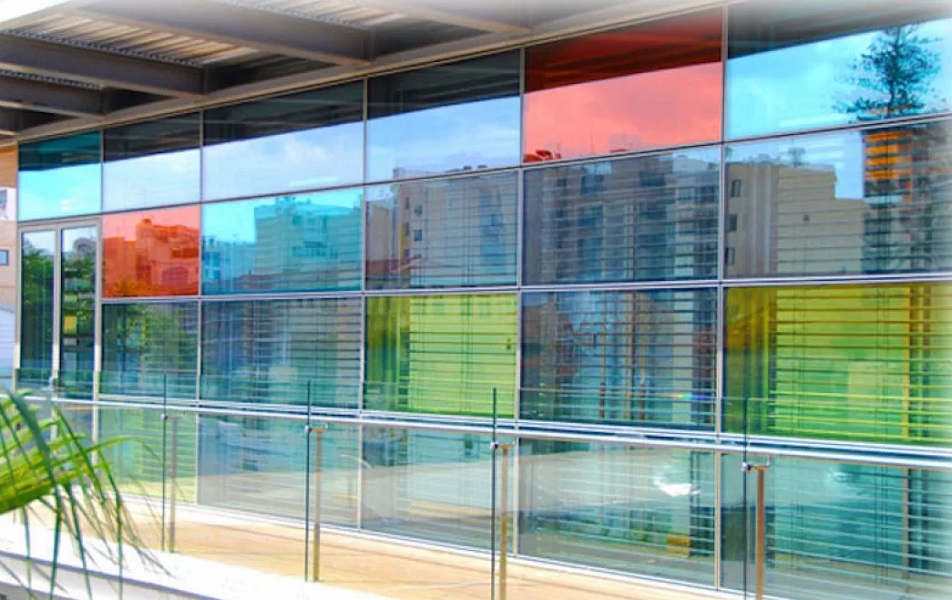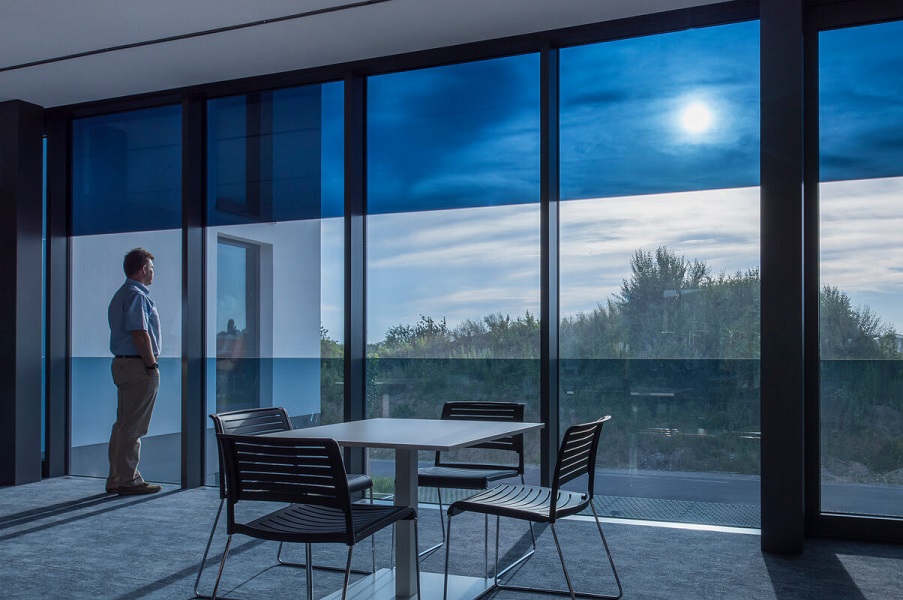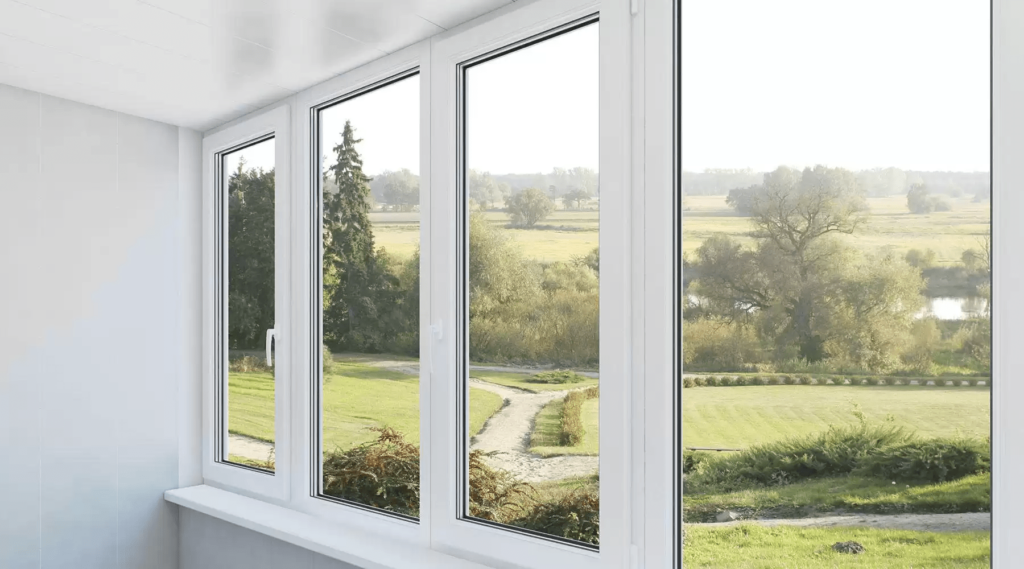Glass is one of the most efficient and useful raw materials discovered by mankind in the distant past. Due to the type of structure of glass and its malleability with the passage of time and the advancement of technology, people thought of making glass in different shapes and types. At first, the creation and discovery of glass was caused by the creation of volcanoes that occurred. This process was caused by the combination of raw materials that are based on silica and the intense heat that the volcanic materials brought to the raw materials of glass and the cooling and changing of the temperature of the glass materials.
Glass production in ancient times was done manually by small melting machines, which were not capable of producing more than one type of glass. Now, with the passage of time, the methods of making glass have changed and it has become completely industrial and in the factory. In this article, we are going to introduce the types of glass and its use.
Types of window glass
One of the most important uses of glass can be mentioned in the construction industry. From the past until now, glass has been used as a covering for doors and windows. For this reason, special attention has been paid to the production of glass for the construction industry, and this led to the formation of a special competition in the manufacture and production of glass in various factories around the world. Today, except for doors and windows, glass is used in various constructions, so that it has a great impact on both the overall structure and the interior and exterior beauty.
Nowadays, due to the increase in the types of glass, it has become relatively difficult to identify the right glass in any field. Therefore, knowing the types of window glass, their capabilities and applications can play an important role in the optimal use of this important material, both in increasing productivity and in increasing the beauty of the building.
If we want to put the types of window glass in a general category, we can write as follows:
flat glass
Tempered glass
curved glass
Laminated or bulletproof glass
double glazed window
Flute or flat glass
Flute glass or flat glass is the primary mode of glass production. Flute glass is produced and supplied in different thicknesses from 2 mm to more than 20 mm, but 4-8 mm thicknesses are commonly used in windows.
Due to its special production method, flute glass is often without waves and bends, which is why it is widely used in buildings and especially windows. Flute glass can be used in a primary form or in a processed form and by increasing new functions.
Reflex glass
One of the products of flute glass is reflex glass, which creates a reflective property with the covering material that is placed on the flute glass. Reflex glass is usually used in exterior facades of buildings. This glass reflects the external light and reduces the penetration of sunlight into the building and also creates a mirror state, while from the inside of the building it acts similar to ordinary glass and does not have reflective or mirror properties, keep in mind that this feature when The night is the opposite.

tempered glass
Tempered or tempered glass is a type of safety glass. When more resistance is needed, tempered glass can be used. By reprocessing flute glass and applying special heat to the glass, the resistance of the glass can be increased several times.
The obtained product is tempered glass or Miral (unbreakable glass), which shows more resistance to pressure and breaking. (Miral glass is a brand in the glass industry, which is the first manufacturer of tempered glass in Iran, and tempered glass is known as Miral glass in the market.)
Laminated glass
Another type of safety glass is laminated glass. Laminated glass consists of two or more layers of flute or toughened glass, which are bonded together with a middle layer that is usually made of PVB. Laminated glass has a high resistance to breaking, and due to the presence of the middle PVB layer, it breaks in a spider pattern when broken, and the broken glass pieces do not fall.
Laminated glass is usually used in places where falling pieces of glass cause damage and also in places where high resistance is required. For example, the windshield of cars is of laminate type.
Glass wooded
One of the types of frosted glass is frosted glass, which has some unevenness on its surface that causes the light to break and the other side of the glass cannot be seen. Majjar glasses can be used in different places and are used in the interior and exterior of buildings. The different designs and colors of this type of glass have made its applications different.
Due to its design and roughness on one or both sides, tempered glass causes irregular refraction of transmitted light and does not provide a clear image of the objects on the other side of the glass to the observer. This glass is produced using the molten glass rolling method between two rollers (which is usually the lower roller with a pattern).
Curved glass
Bent glass is mostly produced in order to realize the ideas of architectural engineers and facade designers of buildings and increase the space, beauty, attractiveness and resistance. Creating variety in the space, using unused spaces and creating harmony and visual harmony are the unique features of this type of glass.
double glazed window
Another type of glass is double-glazed or multi-glazed glass. The main feature of this glass is its very high resistance to the penetration of noise and heat. In other words, double-glazed windows are good sound and thermal insulation.
Double-glazed windows are made by placing two pieces of glass together and creating a vacuum space or neutral air between these two glasses. According to the use and place of use of double-glazed glass, it is possible to use a combination of different types of glass for double-glazing: such as a combination of flute, tempered, mirror, Sekorit, laminate, etc.
Application of glass in architecture
The art of architecture is progressing every day and new materials and tools are used to create new decorations. Among these new materials, we can mention the use of glass in the building, which has maintained its position in all periods of growth and development of architecture. The reason for the special use of glass in architecture can be explained by its use in the interior and exterior of buildings. Among the uses of glass in the interior and exterior architecture of buildings, the following can be mentioned:
Use of glass on the floor
With the advancement of science and technology, building industry engineers always try to reduce the load on the ceiling and floor so that in some cases they can move light between floors. Glass is one of the best solutions for this purpose, but some designers may have concerns about the safety of glass. With the techniques of securing and laminating glass, you can create glasses with high safety and durability.
When glass is safer against impacts and pressures than other conventional building materials, moving on a glass floor with the right calculations and execution creates a great sense of excitement, while at the same time it takes the floor out of repetitive forms and takes on a new form. .
The use of glass in the ceiling
By using glass in the ceiling, in addition to allowing natural light to enter during the day, it also creates a visual relationship with the outside environment and will be very effective in making the space appear larger.
With the advancement of technology in the double-glazed glass industry, glass can be used as heat and even sound insulation. In a way that prevents heat loss from the inside to the outside and causes no excessive absorption of the thermal degree from the outside to the desired place.
glass wall
If the size of your space is small, glass dividers are the best option to make the space look bigger and a suitable alternative to thick and bulky walls. Glass can be used as an excellent partition in decoration. Also, compared to other partitions, glass has a lower cost and a higher execution speed. Similarly, with double glazing, glass can be used as sound insulation in addition to making the space look bigger.
Use of glass in the bathroom
The use of glass next to spaces such as bathrooms, swimming pools, water features, and jacuzzis mixed with water, in addition to distinguishing the design, also creates a dreamy space in architecture and is very common. You can fence around the bathroom shower with glass, which is very acceptable from a hygienic point of view, you will get rid of the fungus between the bathroom tiles, and it will also prevent water from splashing into other parts of the bathroom and getting wet, even in the long run. You will not have problems like metal rusting and it will be easy to clean.


